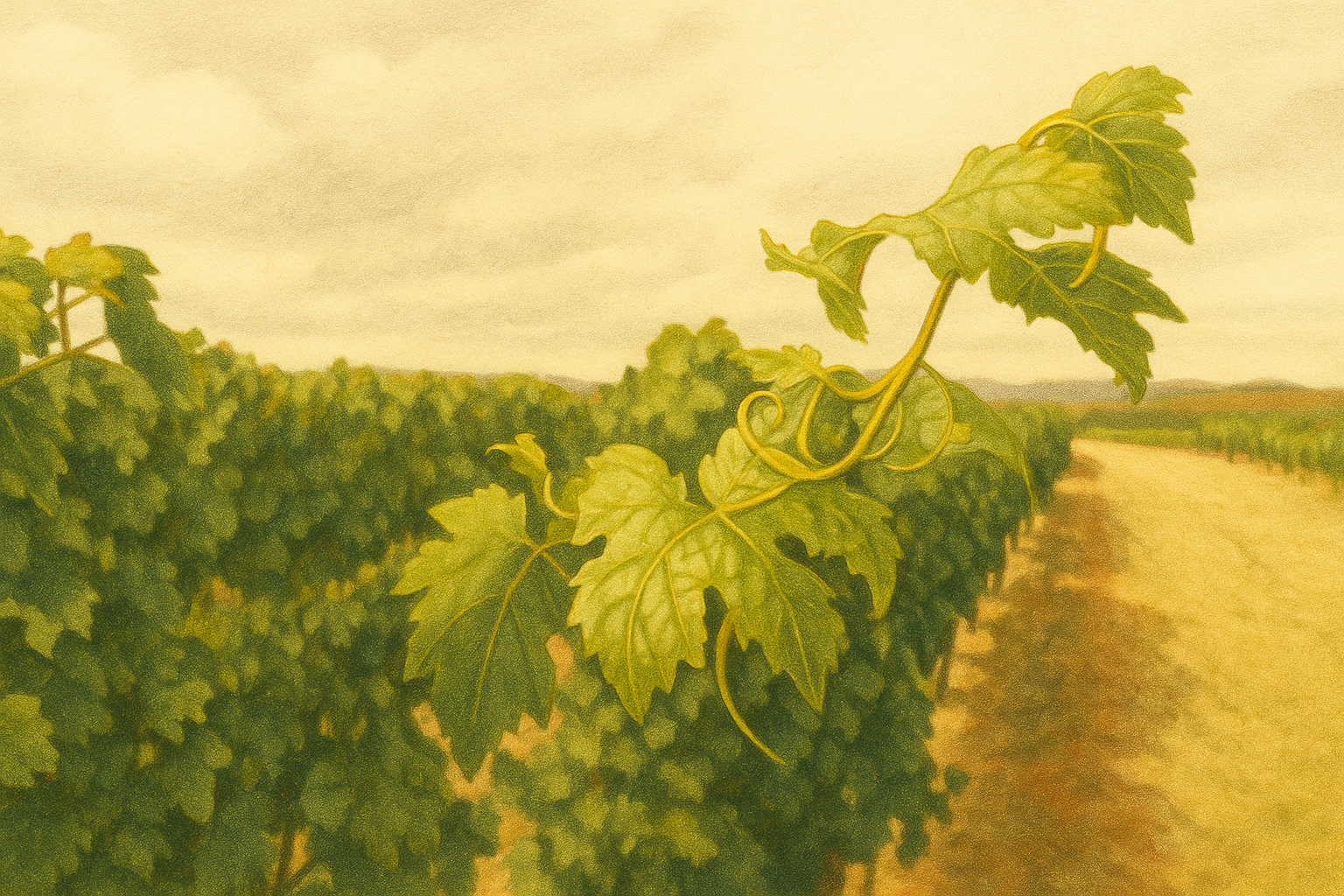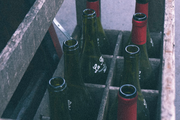Let's be brutally honest, most of us are absolutely terrible at wine storage. We've all done it: shoved that lovely bottle of Burgundy next to the radiator, forgotten about the Prosecco in a sunny kitchen windowsill, or served red wine so warm it could double as mulled wine. Meanwhile, we wonder why our £30 bottle tastes like disappointment in a glass.
Here's the thing about wine, it's basically a living, breathing creature that's remarkably good at dying if you don't treat it properly. But don't panic. You don't need a mansion with a medieval cellar to store wine properly. You just need to stop making the same mistakes that turn good wine into expensive vinegar.
Why Your Wine Storage Game Matters (Spoiler: It Really Does)
Think of wine as that friend who's lovely company but incredibly high-maintenance. Temperature tantrums? Absolutely. Light sensitivity? Off the charts. Hates being jostled about? You bet. But treat it right, and it rewards you with years of beautiful complexity.
The brutal truth is that even a decent bottle can taste like drain water if you've stored it like a can of beans. We've witnessed perfectly good wine collections destroyed by well-meaning enthusiasts who thought the kitchen was a suitable long-term residence. It's heartbreaking, really.
The Four Horsemen of Wine Apocalypse
Heat: The Silent Killer
Anything above 21°C and your wine starts cooking itself. Literally. We're talking about chemical reactions speeding up faster than a student downing cheap plonk before an exam. Your wine storage temperature should hover between 10-15°C - think "slightly chilly British summer evening" rather than "tropical holiday."
Light: The Sneaky Saboteur
UV rays are to wine what kryptonite is to Superman. They break down those lovely tannins and turn your wine into something that tastes vaguely of wet cardboard. This is why smart winemakers use dark bottles, they're not trying to look mysterious, they're protecting their liquid babies.
Vibration: The Unseen Enemy
Your wine doesn't want to be part of your daily workout routine. Constant jiggling disturbs the sediment and generally annoys the wine into tasting rather grumpy. So maybe don't store your collection next to the washing machine on spin cycle.
Temperature Swings: The Relationship Wrecker
Wine likes consistency more than your most reliable friend. Wild temperature changes make corks expand and contract like a concertina, letting air sneak in where it absolutely shouldn't be.
Home Storage Solutions That Won't Break the Bank
Wine Fridges: The Overachiever's Choice
A dedicated wine cooler is like hiring a personal butler for your bottles. Temperature control, humidity management, UV protection, it's basically wine storage perfection in an appliance. Dual-zone models let you keep your reds slightly warmer than your whites, because apparently wine is just as picky about personal space as teenagers.
Pro tip: Don't cheap out entirely, but you don't need to remortgage the house either. Brands like Klarstein and Haier make decent units that won't require a second job to afford.
Wine Racks: The Classic Choice
Sometimes old school is best school. A proper wine rack in a consistently cool spot works brilliantly, provided you're not storing bottles next to the Aga or in that cupboard that gets scorching hot every summer.
Store bottles horizontally, this keeps the cork moist and prevents it from shrinking faster than your motivation on a Monday morning.
DIY Wine Storage: The Creative Solution
Got an under-stairs cupboard? Congratulations, you might have a wine cellar. Basements work even better, assuming they're not damp enough to grow mushrooms. Add some insulation, maybe a small humidifier, and you're basically the wine storage equivalent of a property developer.
Serving Temperature: Where Good Wines Go to Die
Here's where things get properly controversial. That "room temperature" advice for red wine? Complete nonsense, unless your room happens to be a chilly 18th-century castle. Modern homes are far too warm for most reds.
Red Wine Serving Temperature: The Truth
- Light reds (think Pinot Noir, anything delicate): 12-14°C like a cool spring day
- Medium reds (your friendly Merlots and Chiantis): 15-17°C slightly warmer but still refreshing
- Big, bold reds (Cabernet Sauvignon showing off): 17-19°C warm enough to release those powerful aromas
White Wine Serving: Keep It Cool, Not Arctic
- Crisp, zippy whites (Sauvignon Blanc being sassy): 6-8°C properly chilled
- Rich, complex whites (Chardonnay with attitude): 8-10°C cool but not numbed
- Sweet wines: 6-8°C cold enough to balance the sugar
Sparkling Wine: Ice Cold Reality
Champagne and Prosecco want to be served at 4-6°C. Yes, that's properly cold. No, it won't hurt the wine. Yes, your guests will notice the difference.
Quick-Fix Chilling Methods for the Disorganized
The Emergency Cool-Down
Forgot to chill the wine? We've all been there. Here's how to fix your mistake:
- Ice bucket with salt: Submerge the bottle in ice water with a handful of salt. Physics does the work in about 20 minutes.
- Freezer method: 30 minutes for reds that need slight cooling, 2 hours for whites. Set a timer unless you enjoy wine popsicles.
- Wet towel trick: Wrap a damp towel around the bottle and stick it in the freezer. It's like putting your wine in a spa.
The Warming-Up Game
Serving a red that's too cold? Let it breathe at room temperature for 15-30 minutes. Or cup the bowl of the glass in your hands, body heat works wonders, and you look sophisticated doing it.
Professional Wine Storage Wisdom
Decanting: Not Just for Show-Offs
Decanting wine isn't pretentious theatre, it actually serves a purpose. Older reds benefit from separating sediment, while younger wines open up with some air exposure. Just don't go mad with the swirling unless you want to look like you're conducting an invisible orchestra.
Wine Preservation After Opening
Once opened, wine starts its inevitable march toward vinegardom. Wine preservation systems like vacuum pumps or argon gas can extend life by a few days, but honestly? Just finish the bottle. It's the most reliable preservation method known to humanity.
Building Your Wine Collection
Start small, store smart, and drink regularly. A wine collection that never gets touched is just expensive decoration. Buy wines you actually want to drink, not bottles that look impressive gathering dust.
The Bottom Line
Proper wine storage and serving isn't rocket science, but it does require paying attention. Treat your wine with the same respect you'd show a good friend, keep it comfortable, protect it from harm, and it'll reward you with years of excellent company.
Remember: wine is meant to be enjoyed, not worshipped. Store it properly, serve it at the right temperature, and then actually drink the stuff. Your taste buds (and your wallet) will thank you for it.
Ready to put theory into practice? Explore our carefully curated monthly wine subscriptions at Evervine.co.uk, each bottle comes with storage and serving recommendations because we want you to taste wine at its absolute best.





